My husband Andy and I reviewed Idaho-based Inergy’s products before. We tested Inergy’s Kodiak and the Apex solar generator (which superseded the Kodiak). The company recently released a few new heavy-duty versions so we scooped one of their Flex 1500 Power Stations to see what improvements they’ve made, and why (or if) the Inergy Flex 1500 Power Station solar generator / battery bank should be considered a worthy bit of kit in your overlanding arsenal of gear.

Inergy Flex 1500 Power Station Features
The Inergy Flex 1500 Power Station arrives neatly packed in one box with a heavy-duty power console, one nesting Flex battery, a standard wall charger, and a user manual. Once assembled with a simple click to align the power console to its battery base, you quickly get an idea of how stout this unit is.
Weighing in at nearly 30 pounds, the Inergy Flex 1500 Power Station isn’t a lightweight battery bank. But, once you realize the features it has and everything it can power, it’s no wonder extra weight is needed to gain a leg up from its predecessors. It’s a bit stouter than its earlier siblings, it’s 14” x 8” x 8.9” in size. Although earlier Inergy power stations had a carrying handle and shoulder strap, the Flex 1500 Power Station only has a carrying handle.
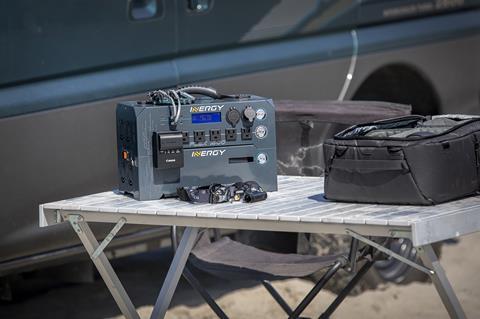
- The Flex 1500 offers the following power ports:
- Six 110-120-volt wall outlets
- Two 60W USB-C ports with 3.0 PD and QC
- Two USB-A ports with 2.0 QC
- Two 13.8-volt 15A cigarette-type lighter ports, regulated DC output (20A at 13.8VDC total combined DC output)
- Two 5.5mm x 2.5mm DC outputs for accessories
Inergy’s Flex 1500 also showcases a small blue-on-blue LCD display and separate AC, DC, and battery LCD power button. This unit includes a 5.5mm x 2.5mm input port, as well as an EC8 input port. Cooling vents adorn multiple sides (be sure to keep these clear at all times). Additionally, the Flex 1500’s feet are removable for easy multi-battery stacking potential.
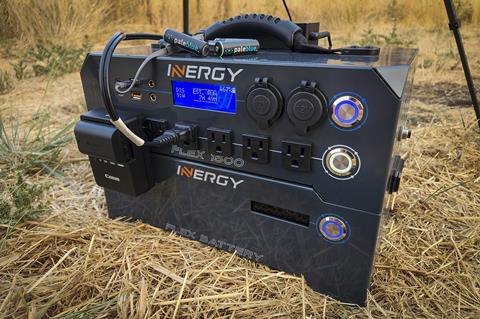
Using the Inergy Flex 1500 Power Station
Though we used the Inergy Flex 1500 Power Station with a single Lithium-ion expansion battery pack, up to 96 Flex Batteries can be ganged together to a single power console (providing approximately 96 kWh of power).
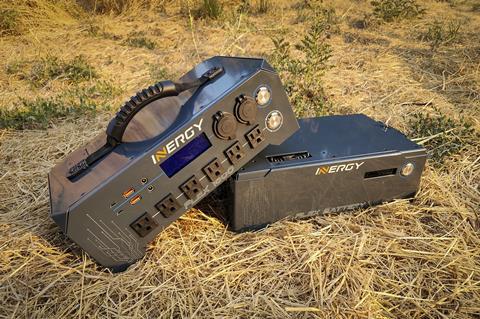
You can charge the Inergy Flex 1500 Power Station multiple ways. We powered it via our Off Grid Trek 300 Watt Solar Blanket when traveling remotely. We also plugged it in at home using their supplied standard AC wall charger, which fully charges the unit in approximately four hours. There is also a DC car charger (which we didn’t test), and the ability to combine these at the same time (per Inergy’s website).
Note: The Inergy Flex 1500 Power Station includes an advanced maximum power point tracking (MPPT) charge controller with up to 90V of solar charge input. The company states the unit can be charged in as little as 3½ hours in ideal sunlight (though ours took longer).
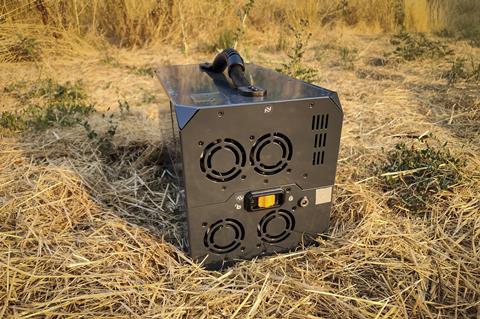
We tested the Inergy Flex 1500 Power Station using a wide variety of devices and tools. We used the AC components to charge DSLR camera batteries, laptops, power tools, and more. The DC output powered things like our portable ARB ZERO refrigerator and more. The USB ports allowed us to charge our Ledlenser headlamps, LED work lights, smartphones, and a bunch of smaller things. The top power button controls the USB and DC operating system while the middle button controls the AC ports. The power button on the Flex 1500 battery pack illuminates an LCD screen, showing how much battery life is left.
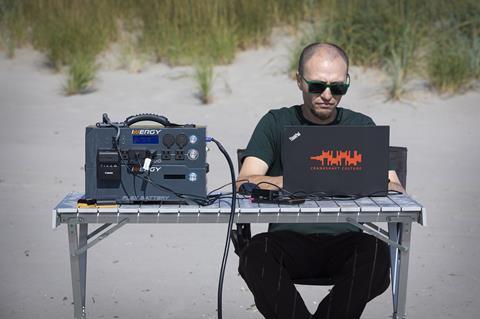
Inergy Impressions
Armed with a two-year system warranty and the ability to accept either series or parallel wiring configurations, the Inergy Flex 1500 Power Station is work-horse powerhouse. During our testing time with it, we used it for beachside work sessions, photoshoots in remote locations, overland rallies, and at home to charge our laptops during daily use.
The Inergy Flex 1500 Power Station was easy to use and handle. We appreciated the design change to make all power buttons flush with the unit (versus protruding beyond it)—offering less chance of accidental damage to those switches and less accidental power-ons during transport.
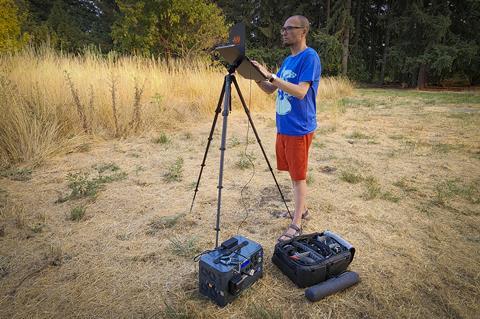
Once powered up, the power console’s LCD screen shows the current power being drawn, estimated run time, and percentage of battery charge that’s left. In bright conditions, like on a sunny day, this screen is hard to read.
The estimated run time also swings wildly when used; planning on exact usage time is tricky due to its multi-hour guesstimate of run time. Tip: Error on the conservative side of battery life if you’re powering something critical in case it runs out before its noted time.
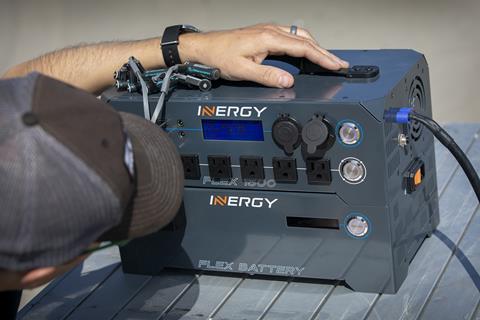
However, those items set aside, the Inergy Flex 1500 easily and quickly charged everything we plugged into it. Its operation is silent nearly 100% of the time, with its quiet fan kicking in a mere handful of times during our testing period with it. During our daily-use case study at home, the Inergy Flex 1500 Power Station lasted multiple days without needing a charge. It powered an LED work light and Lenovo laptop 8-14 hours a day without issue. Note: We were not able to test this product in extreme heat or cold conditions to see how its battery life was altered.
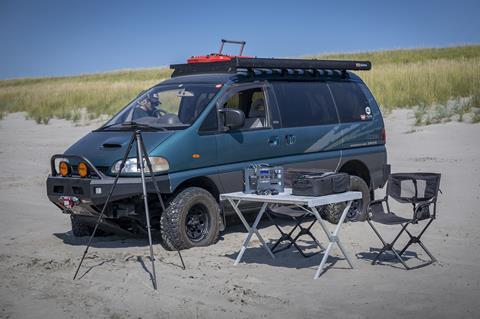
Final Thoughts
If you’re in the market for an expandable and versatile power station that can be charged in a variety of ways, the Inergy Flex 1500 Power Station should be considered. It’s not the cheapest of the bunch, but once you realize its features, chargeability, and expandability, the price doesn’t seem that steep.
It’s a surefire way to retain power no matter where you are, if it’s at home or on the go. The MSRP at time of this article’s writing is $1,450.
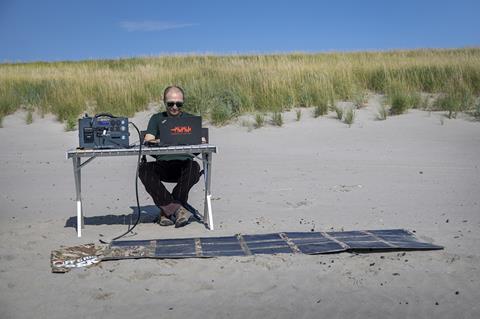
For more informative articles like this, consider subscribing to OVR Magazine in print or digital versions here.










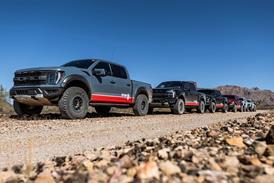



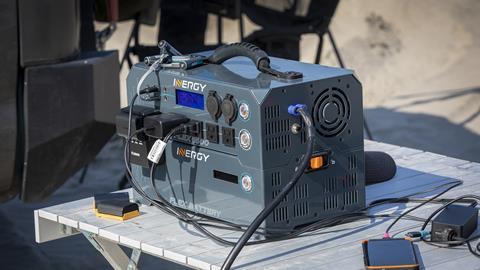






No comments yet